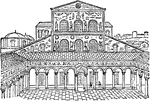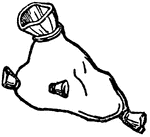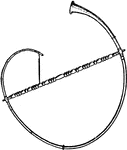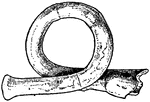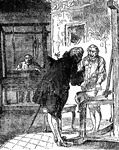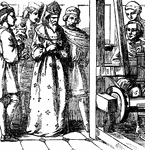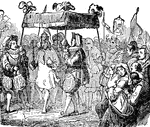
Abdomen
"The Abdominal Viscera in situ, as seen when the abdomin is laid open and the great omentum…

Medieval Amice
Three examples of the medieval method of putting on the amice. The amice is a liturgical vestment used…

Interior of Trajan's Bascilica
"Interior view of Trajan's Basilica, as restored by Canina." — Encyclopediia Britannica, 1910

Basilica of Old St Peter
"Sectional view of the old Basilica of St. Peter, before its destruction in the 16th century." —…

Roman Bath
"Roman Bath, from a Painting on the Walls of the Thermae of Titus at Rome." — Chambers' Encyclopedia,…
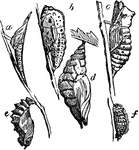
Chrysalids
"Chrysalids: a, Orange-tip Butterfly; b, Black-veined White Butterfly; a, Swallow-tailed Butterfly;…

Dalmatic
"The deacon's robe, in the Roman Catholic Church. the most ancient form of the dalmatic is exhibited…

Denarius
"Denarius of the earliest kind: Having on the obverse a personification of Rome as a warrior with helmet;…

Roman Eagle
"Eagle, as a military standard, was adopted by the Romans, and even by nations preceding them in history.…

Arterial System
"Diagram of the arterial system of A, Scorpio, and B, Limulus. The Roman numerals indicate the body…
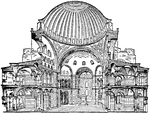
Hagia Sophia
Cross section of Hagia Sophia in Istanbul (historically Constantinople). The Greek name Hagia Sophia…
Aulos
"Roman Ivory Aulos found at Pompeii, showing slides and rings." — The Encyclopedia Britannica,…
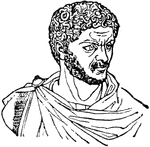
Caracalla
"Marcus Aurelius Antoninus, eldest son of the Emperor Severus, was born at Lyons A.D. 188; died in 217.…
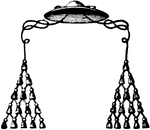
Cardinal Hat
"Cardinal, an ecclesiastical prince in the Roman Catholic Church, who has a voice in the conclave at…
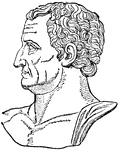
Nerva
"Nerva, the successor of Domitian, and one of the most virtuous of the Roman emperors. He was born in…

Ivory Carving
"Leaf of a diptych, Roman, probably about 4th century, South Kensington Museum collection." —…
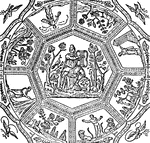
Vault
Painted vault from the Catacombs of St. Callixtus, Rome. In the centre Orpheus, to represent Christ…
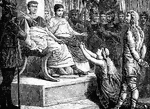
Caractacus And Claudius
Caractacus was a British Chief that had fought very bravely against the Romans. He was brought to Rome…
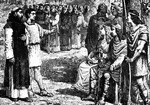
Augustine and Ethelbert
"Ethelbert met Augustine in the open air, under a tree at Canterbury, and heard him tell about the true…

Mary I
Mary, the fourth and penultimate monarch of the Tudor dynasty, is remembered for returning England from…

Cupid Equipped by Venus
This painting, by Tistian, is of a Roman story. The painting can now be found hanging in the Borghese…
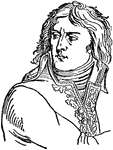
Napoleon Bonaparte
(1769-1821) King of Italy, Mediator of the Swiss Confederation and Protector of the Confederation of…

Julius Caesar
(100 BC- 44 BC) A Roman military and political leader and one of the most influential men in world history.

Caligula
Gaius Julius Caesar Augustus Germanicus, known as Caligula was the third Roman Emperor and a member…
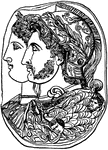
Cameo
Cameo, a term applied to gems of different colors sculptured in relief. The art of engraving on gems…
